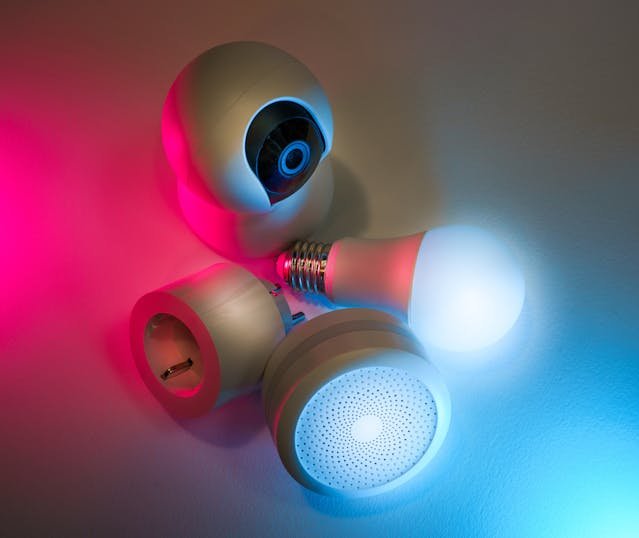In today’s world, securing your home is paramount. But, unfortunately, people tend to believe that effective smart home security calls for a considerable amount of investment. Fortunately, that is not the case; you can protect your home without breaking into a sweat. In this guide, I’m going to show you how to boost your home security on different levels while sticking to reasonable prices.
Basic Security Measures
First of all, doors and windows should be secured. The doors and windows should not lack good locks. Secondly, one can fix some simple alarms and sensors that will repel burglars. These are the basic measures of setting up your home security.
Securing Doors and Windows
First, examine all the doors and windows. They must be sound and have good locks. If possible, install deadbolts on the doors to make them more secure. Equally important are the window locks; they should be solid and not easily tampered with.
Adding Basic Alarms and Sensors
Basic alarms and sensors offer an inexpensive yet effective way to raise the bar on security. Sensors on the doors and windows may quickly notify you in case an intruder attempts to gain access. Motion detectors are equally effective; they detect movements and then sound an alarm. These gadgets are pretty easy to install and greatly heighten home security .

Low-Cost Smart Security Devices
Now, let’s take a look at some budget-friendly smart security devices. Many cameras and sensors hit the market with great features at quite affordable prices. Another good alternative is a DIY security system. Very easy to install, besides that, you may tailor them to anything you think is suitable for your place.
Indeed, there are many affordable security cameras on sale. For a cheap camera, one would want to have good resolution, night vision, and the ability for motion detection. Wyze Cam, Blink Mini, and TP-Link Kasa Cam are some of the inexpensive versions you can consider. It is no surprise that impressive features are seen in lower price-tagged cameras.
Do-It-Yourself Security Systems
The cost of the DIY security systems varies, although they are very flexible. Brands like SimpliSafe, Ring Alarm, and Abode offer various kits at a relatively more affordable price that you can install yourself. Many of them include things such as door/window sensors, motion detectors, and a control panel. Additional components can be added when necessary, which makes these kinds of systems flexible for home security.
Leverage Existing Technology
You don’t have to purchase new gadgets every time. Make use of the smartphones and tabs you already have for the monitoring purpose. Most of the apps will turn them into security cameras. Besides, old device repurposing can help you save money while upgrading your security setup.

Using Smartphones and Tablets
A number of apps can convert older smartphones and tablets into cameras. Apps such as Alfred, Manything, and Presence allow using them as monitoring tools. You just need to install the app on a smartphone or tablet, place it in a strategic location inside your home, and you can begin monitoring.
Recycling Old Devices
Old devices can be used for a wide range of security purposes. For example, an old smartphone may serve as a dedicated security camera. An older tablet can also be put into work to serve as a control panel for your security system. Repurposing such a device will upgrade the facets of home security without blowing the budget.
Affordable Network Security
It’s about time you secure your Wi-Fi network. Fortunately, ways to inexpensively do this are available. First things first: setup a strong password and enable encryption. You can also have free and low-cost software solutions which may protect your network from any cyber threat.
Establish a Strong Password
A strong password is the first line of defense to secure your Wi-Fi. Mix letters, numbers, and special characters together. Avoid using information like birthdays and common words that can easily be guessed. Change your password regularly for the best security.
Activating Encryption
Encryption provides even more security to your Wi-Fi network. Ensure that WPA3 encryption is enabled on your router. This is the latest and most secure standard. In case your router does not support WPA3, then you can use WPA2 as your alternative choice.
Free and Low-Cost Software Solutions
There are many free and low-cost software programs you can install to provide additional security for your network. These include virus scanning: Avast and AVG both have a version that you can download for free that provides basic protection. Another option is a VPN, or Virtual Private Network. A VPN encrypts the traffic to and from your Internet to protect your privacy.
Free and Low-Cost Security Practices
Use strong passwords and update your devices frequently. Also, take advantage of some community resources and supports. Community watch programs will give layers of security to a home that costs absolutely nothing.
Security of passwords and their periodic change are cardinal preconditions for all your gadgets and accounts. They have different passwords for different gadgets and accounts. Change them periodically. Regular update: The manufacturer releases periodic updates to patch the loopholes and therefore, keep gadgets and their software updated accordingly.

Community Resources and Support
Many communities have neighborhood watch programs that can add value to securing your home. These are programs in which neighbors help each other in keeping a lookout for suspicious actions and events. In such a program, your participation will add one more layer of security to your home.
Case Studies: Budget Security Success Stories
Real-life stories can be an inspiration. Many house owners who had successfully secured their homes on a budget add to the list. For instance, one family managed to put up an effective security system by incorporating basic alarms with reused smartphones. These stories go on to prove that you simply don’t have to spend a fortune to protect your home.
Success Story 1: The Smith Family
The Smith family wanted to secure their home without blowing the bank. The family began with some basic door and window sensors. They also used the Alfred app to repurpose old smartphones into security cameras. With these reasonably priced solutions combined, they could develop a robust, effective security system that would meet their needs.
Success Story 2: The Johnsons Family
The Johnsons were concerned about the security of their house but had a very scarce budget. They chose to do a DIY security system that was supplied by a company called SimpliSafe. It included door/window sensors, motion detectors, and a control panel. The antivirus software they used in securing the network is free. Without having to break their budget, the home security was enhanced by the Johnsons.
Success Story 3: The Lee Family
The Lee family wanted to enhance their home security without investing in a very expensive system. They joined the neighborhood watch program and installed simple alarms on all doors and windows. An old tablet was repurposed as the control panel for this basic security system. The cost of attaining their goal of security was cheaper by making use of community resources, combined with the reuse of their used devices.
Final Words
It is true that home security can be on a budget. Basic measures, devices that do not have to cost an arm and a leg, and maximizing technology that you already possess can create quite a sturdy security system. Remember, vigilance and being proactive are the keys to achieving this. Home protection does not need to be pricey; it merely requires some creativity and effort.
By following just these tips and strategies, you will have no problem in giving a quick facelift to home security without having to break into your wallet. Be it using devices available at cheap prices, improvising on old gadgets, or availing community resources available, there are many ways through which inexpensively you can surely protect your house. Stay safe and secure!











